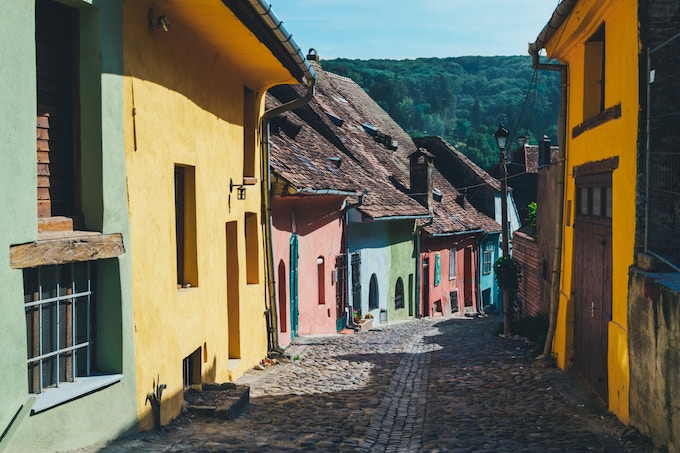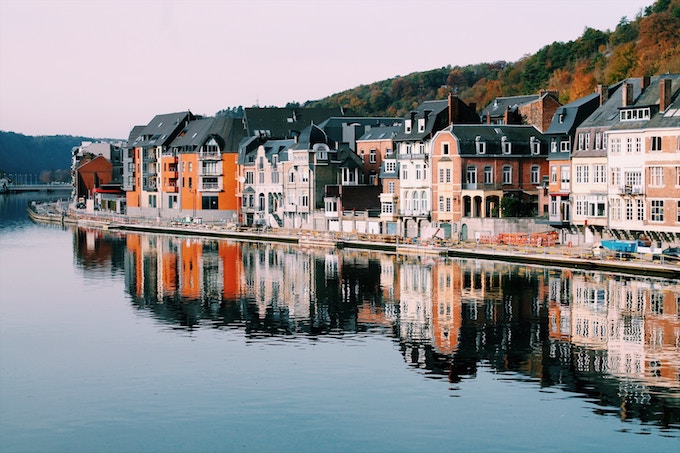Ancient clock towers looming over rusty red rooftops, winding rivers and canals dividing the sprawl of time-worn buildings, well-travelled cobblestone paths steeped in history and culture – travelling to Europe is guaranteed to be a rich and eye-opening experience. There is so much to see in Europe that one week might not seem like enough, but good news – the continent is so well-connected that, with the right planning, you’ll still be able to check a lot of experiences off your bucket list. Planning a Europe trip can be overwhelming, but we’ve got you covered with this list of things to consider. Whether you’re a first-timer to Europe or a seasoned traveller, we’ll help you make the most of what will definitely be the trip of a lifetime!
How to plan for a trip to Europe
Make an itinerary
The first step, and trickiest part of any European trip, is to plan where you want to go. If you’re travelling with friends, narrow down a list of places you want to hit together, then map out a logical itinerary that makes sense for your time frame and budget. Though it can be tempting to try and fit as many destinations in as possible, it’s best to spend at least a full day wherever you plan to stop – only then will you be able to get the best feel for the place, and see more of what it has to offer without feeling rushed. If you’re having a hard time narrowing it down, keep in mind that you can always hit the places you missed on your next Europe trip – that way, you can be guaranteed to return even without having to throw a coin into the Trevi fountain over your left shoulder.
If you’re having trouble narrowing down exactly what you want to see and where you want to see it, one of the best options for spending a week in Europe is joining a group tour. Not only will you enjoy included accommodation and meals, your guide will know all the best hidden gem spots that you never would have known about if you were travelling solo.

Time your trip
When making your itinerary, time your trip around the things you want to see the most. There’s a lot going on in Europe year-round, but there might be specific experiences that might be dealbreakers for your trip. Summer is high season for most destinations, for good reason – the weather tends to be best in the summer months. However, this might mean visiting spots that are off the beaten track to avoid tourist crowds. Go to the Netherlands in the spring if you want to see the Keukenhof tulips in full bloom, or go in the fall for Oktoberfest in Germany, and other harvest festivals around Europe. Winter might seem like a more unconventional time for vacation, but it’s a great time to travel if you want to see all the Christmas markets around Germany and Austria, find true hygge in Denmark, or live our your Love Actually dreams in London. It’s also the optimal time to hit the best ski slopes in Europe.
Bring necessary documentation
Once you’ve decided on the perfect itinerary, it’s time to get all your paperwork in order. Check that your passport is valid for the duration of your trip, and consider buying travel insurance. Make sure you’re able to get any visas you might need to cross the border – depending on your citizenship, you might need a Schengen visa. Thanks to the open borders of the Schengen area, travelling between countries in the area is unrestricted, but be sure to carry identification as well as confirmations of accommodation and transportation to avoid any trouble at the borders.

Take out local currency
It’s super helpful to have cash on hand in Europe – it can be useful when paying small local vendors, public transit fares, and cab fare. Though most of Europe is generally good with withdrawing cash from cash machines and accepting foreign credit and debit cards, having a decent amount of the local currency on hand can back you up against credit and debit card malfunctions, and help to avoid incurring foreign exchange fees from your bank.
Learn some language basics
Any trip to Europe is going to be a cultural experience of a lifetime, so why not make the most of it and learn some of the local tongue? Locals will appreciate your efforts, and it might help you out of some binds and add to the fun of the experience. Download some language apps to teach yourself some basic phrases that will help you interact with the people you’ll come across on your travels.

Pack smart
When travelling to Europe, you’ll want to pack light. This can be hard, but one week is the perfect amount of time to pack for – you’ll have enough space to bring the essentials and still have a bit of room to bring home some awesome souvenirs. Don’t worry if you find yourself needing something you didn’t bring – things are accessible in Europe, and it’ll be a great excuse to check out the shopping scene if you need to pick something up. Bring travel adapters and keep the weather in mind, but above all else, bring a pair of comfy shoes. Opting to walk places will help you save on cab fare or transit costs, and walking the streets of Europe is the best way to see the sights.
All your stuff should fit within one carry-on bag. Everyone will tell you that one of the biggest perks of Europe is amazing train travel, and carrying only hand luggage will allow you take advantage of it. Not only is train travel in Europe easy and accessible, it can also be wonderfully scenic – one of the most beautiful train rides I’ve ever taken was from Salzburg to Venice, and it was incredible to watch as my view of the Alps changed into the Adriatic. If you are going to be flying between destinations, having only a carry-on means you won’t be stuck at baggage claim waiting for a checked bag – you only have a week, so there’s no time to waste!

While you’re there
In order to ensure an amazing experience on your Europe trip, make sure to keep an eye on your belongings, and watch for any tourist scams that might ruin your time. Take a lot of pictures, and don’t be afraid to break out the touristy poses! Be sensitive to the local culture, and take care not to offend. When you’re out and about, it’s always a good idea to have a physical copy of a local map on hand, and take advantage of Wi-Fi hotspots to stay connected without having to pay exorbitant fees for roaming services. Account for transit and waiting times when planning your days, and keep in mind some countries in southern Europe close mid-afternoon for a siesta – from experience, it can be agonizing to arrive in Italy after a long train ride only to have to wait for restaurants to open so that you can finally have your first amazing plate of pasta (but was definitely worth the wait!).

If you did all the research and prepared everything for your trip to Europe, everything will be a breeze while you’re there. Get ready to walk until you drop, be awestruck at everything you see, and be completely out of your element in the best way possible!

